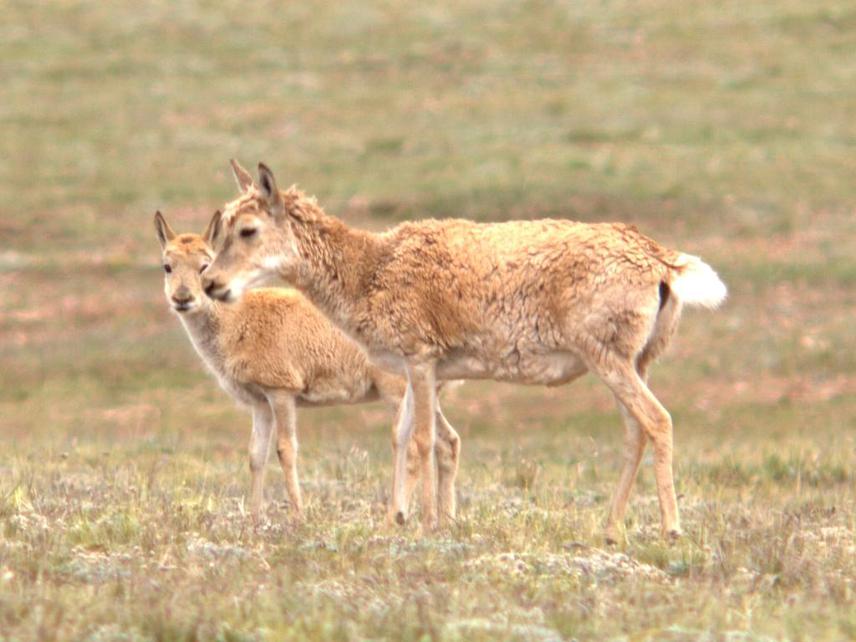Xia Lin
A study of the behavioral ecology and the conservation status of this species in their habitat.

The Tibetan Antelope or Chiru is listed in the IUCN Red List as a Threatened Species. In recent years the activities of governments and wildlife protection organisations have brought poaching under control, but the deterioration of the antelope’s natural habitat and the degradation of the environment caused by the development of transportation facilities and other human activities are a continuing threat to the survival of the species. Hoh- Xil is one of the main areas of distribution of the chiru.
Each year, Tibetan antelopes will move to the hinterland of Hoh-xil to give birth. The Qinghai-Xizang Highway and the newly built Qinghai-Tibet railway are both on their migration routes. In order to ensure that the chirus cross the railway safely, 15 passages have been built across the railway in the reserve, but still no passages have been built across the highway. The traffic on the highway is much busier than formerly, as the construction of the railway brought more transportation vehicles. More convenient transportation facilities will bring more traffic and tourists to the area now and in the future. How will the highway and railway affect the migration of Tibetan antelopes? How effectively will the newly-built passages work? For all these reasons, we designed this project.
Our field work will provide valuable information on behavioral ecology and the conservation status of this species in their habitat. The assessment of the disturbance caused by the railway and the efficiency of the crossing structures will help the railway construction team to schedule a conservation plan for this and related species during the period of the construction and in the future.
It is the first time wildlife safe passages have been built in China; with increasing development, more highways and railways will be built in western China in the future, and it is particularly important that these efforts be monitored and the lessons learned from these mitigation experiments be shared with others. Results from this study on traffic disturbance may diagnose any potential problems of infrastructure development at an early stage, which will help the reserve and policy makers to design a long-term conservation plan. An effective network will be created between the protected area and the local government, and will initiate a long term mornitoring plan to provide data continuously. The involvement of the staff of the reserve, local residents, and local government officials will ensure the long-term conservation impact of the project.